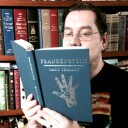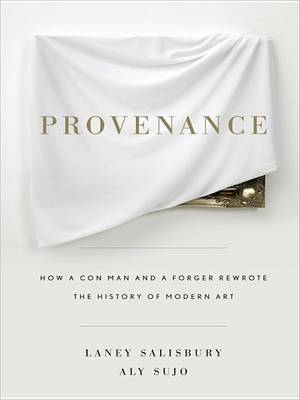
Michael @ Knowledge Lost
Written on May 27, 2014
Provenance has one of the most extraordinary narratives I’ve ever read in a non-fiction book; it reads like an art thriller, full of suspense and mystery. It wasn’t what I expected from a true crime book on art history, I was hooked in this world and on the edge of my seat to find out what will happen next. The authors of this book, Laney Salisbury and Aly Sujo are both investigative reporters and spent the time to research and tell us the story of John Drewe, a villainous con man that set out to defraud the art world. Recruiting a struggling artist, John Myatt, to paint the forges, it is estimated that over 200 forgeries were made and only about 60 of them recovered. This means there is about 140 paintings still out there been accredited to artists like Giacometti, Dubuffet and so on.
If I may, I want to quickly touch on the problematic approach to authenticating a provenance rather than a painting. As I said before the use of computers and photocopiers made it easy to fake these documents, but John Drewe went further by sneaking forged documents of auctions, gallery displays and so on into the archives of museums and the Institute of Contemporary Arts (ICA) in London. What was scary about the elaborate efforts Drewe went to to make this provenance real is the fact a test on the painting might have been so much quicker. If they took the effort to test the paint they would have found that Myatt used a combination of emulsion paint, K-Y Jelly and then vanish to make the paintings look like oil paintings.
All my knowledge on art forgery came from people like Neal Caffrey (White Collar) so I’m not nearly knowledgeable on the topic, as I’d like to be. Art history and art crimes can be fascinating topics and what I loved about Provenance is how it showed how crime seeps in and becomes part of the history. When John Myatt served his time he decided not to point out any paintings that he had done, and that raises an interesting question. Is it better to point out the 140 or so fakes still out there and have the owners lose all that money or not? If a fake is just going to be burnt is it better to own up to the forgery or let it remain a piece of art? The financial and artistic costs would be devastating but what about the moral code that Myatt wished to live by?
This is what made for a fascinating read, I learned a small part of art history, art crimes and it also raised some philosophical questions. I know I might have said a little too much but this is history, can you give spoilers on historic events? It is a great piece of narrative non-fiction and a great way to learn more about art crimes.
This review this review appeared on my blog; http://literary-exploration.com/2014/07/10/provenance-by-laney-salisbury-and-aly-sujo/
